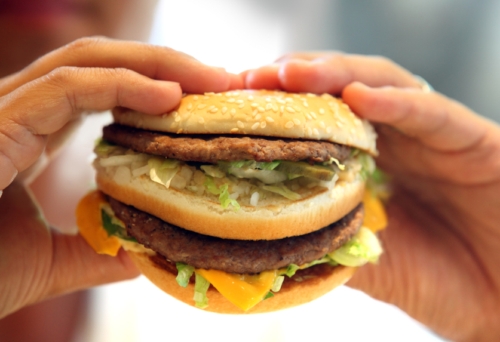
Across the United States, North America and throughout the world, the impact of the fast food industry has really overtaken our collective culinary culture. It has driven demand, competitive pricing for fast meals and disease rates right through the roof in the U.S.
To put it bluntly, fast food is one of the main reasons why Americans are getting fatter, sicker and living with high morbidity as they age. This trend is also occurring within a much younger demographic than ever before.
Let’s face it: Food marketing attracts children, teens and families to their respective brands, hooking them for years, all the while damaging their health.
Most fast food is designed to fill you up with high calories (and minimal nutritional value). It is also designed to stimulate pleasure centers of your brain and get you addicted fast. Fast food is a source of empty calories, sodium, saturated fat, trans fat, poor-quality protein and carbohydrates that cause you to gain fat.
In the U.S., the National Center for Health Statistics has indicated that the percentage of Americans with obesity increased from 13% to 31% in less than four decades. During this same timeframe, the fast food industry simply skyrocketed. Other U.S. health agencies like the National Bureau for Economic Research claimed that rates of childhood obesity in the U.S. could be reduced by 18% by banning fast food advertising. That doesn’t surprise me.
Here are some examples of the fast-food bestsellers in America today:
Big Mac: 560 million of these are sold every year. They contain 540 calories with 29 g of fat (10 g of this is saturated and 1.5 g is trans fat) and 1,040 mg of sodium.
Whopper with Cheese: 760 calories, 47 g of fat (16 g saturated and 1.5 g trans) with 1,450 mg of sodium.
Taco Bell Tacos: They sell 2 billion tacos annually; they provide 170 calories, 10 g of fat with 310 mg of sodium. This is for a 78 g size which is actually quite small.
I am not even going to get into the fried chicken, sandwiches, French fries, soda and onion rings that people habitually order. Some consume takeout food every day for lunch and dinner.
You can understand how the health of people could be dramatically altered by consuming too much of this bad food. The sad fact is that most people do not understand the nutritional content of these foods—and they don’t seem to care. These foods are convenient, cheap and plentiful, and satisfy a need for a quick fix and immediate gratification.
However, there is a downside.
The over-consumption of this food can be deadly. It puts you at risk of obesity, high blood pressure, diabetes, heart disease, cancer and stroke. Not only is this domino effect occurring with a great degree of regularity, it is fast becoming a major health threat for younger folks who have steadily increased their fast food consumption in the last several decades.
I simply refuse to eat most types of fast food.
But there’s one I will eat—takeout sushi. It’s virtuous by comparison.
I like maki sushi, which is sushi rolls cut into six to eight pieces with a layer of rice on the outside covering a combination of vegetables, avocado, tuna, salmon or shrimp. It is low in calories, fat and sodium. It’s also made with brown rice which I prefer. Sushi is an excellent source of protein, vitamins and fiber, putting it on my good-for-you list.
A spicy tuna roll contains 290 calories, with 11 g of fat, 26 g of carbohydrate and 24 g of protein per roll.
Look for fresh sushi made daily at your local grocery store—and bypass those French fries and onion rings, please!
Sources:
“Fast Food Restaurants & Nutrition Facts Compared,” A Calorie Counter website; http://www.acaloriecounter.com/fast-food.php, last accessed, July 21, 2014.
Bryant, C., “10 Most Famous American Fast Foods,” How Stuff Works website, July 21, 2014; http://recipes.howstuffworks.com/menus/10-american-fast-food-menu-items.htm#page=0/, last accessed July 21, 2014.
Taco Bell website; http://www.tacobell.com/nutrition/information, last accessed July 21, 2014.
Sushi FAQ website; http://www.sushifaq.com/sushi-health/calories-in-sushi/, last accessed, July 21, 2014.













